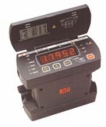Common Sense Safety
 Contrary to popular opinion, all workers can prevent themselves from getting hurt. The easy way to avoid pain is to observe how others have taken risks and been injured, rather than learning the hard way–from your own injury. That’s common sense! By avoiding unsafe acts and practicing common sense, your work will go smoother, with less chance for accidents.
Contrary to popular opinion, all workers can prevent themselves from getting hurt. The easy way to avoid pain is to observe how others have taken risks and been injured, rather than learning the hard way–from your own injury. That’s common sense! By avoiding unsafe acts and practicing common sense, your work will go smoother, with less chance for accidents.
The experts say at least 80% of industrial accidents are caused by unsafe acts on the part of employees–and not by unsafe conditions. Although employers are required by law to provide a safe and healthful workplace, it is up to you to be aware of your work environment and follow safe work practices. Statistically, most accidents are caused by unsafe acts, including:
Being In A Hurry – Sometimes there is more concern for completing a job quickly instead of safely. Take time to do a good job and a safe job.
Taking Chances – Daring behavior or blatant disregard for safe work practices can put the whole work team at risk. Follow all company safety rules and watch out for your fellow employees. Horseplay is never appropriate on the job and can lead to disciplinary action.
Being Preoccupied – Daydreaming, drifting off at work, thinking about the weekend, and not paying attention to your work can get you seriously hurt or even killed. Focus on the work you are paid to do. If your mind is troubled or distracted, you’re at risk for an accident.
Having A Negative Attitude – Being angry or in a bad mood can lead to severe accidents because anger nearly always rules over caution. Flying off the handle on an outage is potentially dangerous. Keep your bad moods in check, or more than one person may be hurt. Remember to stay cool and in charge of your emotions.
Failing To Look For Hidden Hazards – At many jobsites, work conditions are constantly changing. Sometimes new, unexpected hazards develop. Always be alert for changes in the environment. Hidden hazards include spilled liquids that could cause slips and falls; out-of-place objects that can be tripped over; unmarked floor openings one could step into; low overhead pipes that could mean a head injury; and other workers who don’t see you enter their hazardous work area.
Remember to stay alert for hazards, so you won’t become one more accident statistic: You can do a quality job without rushing. Maintain a positive attitude and keep your mind on your work. This is just common sense–something smart workers use!

 General. The typical generator stator winding consists of three independent circuits or phases. These circuits must be as symmetrical as possible with one another to achieve maximum generator efficiency. This symmetry includes the cross section of each conductor as well as the length or distance from main lead to neutral lead. The Copper Resistance (or Winding Resistance) test measures this “distance” for proper length and high resistant anomalies (i.e. cracks, shorted turns, open circuits, etc.). An increase in resistance from one test to another could indicate the potential for a future winding failure.
General. The typical generator stator winding consists of three independent circuits or phases. These circuits must be as symmetrical as possible with one another to achieve maximum generator efficiency. This symmetry includes the cross section of each conductor as well as the length or distance from main lead to neutral lead. The Copper Resistance (or Winding Resistance) test measures this “distance” for proper length and high resistant anomalies (i.e. cracks, shorted turns, open circuits, etc.). An increase in resistance from one test to another could indicate the potential for a future winding failure.